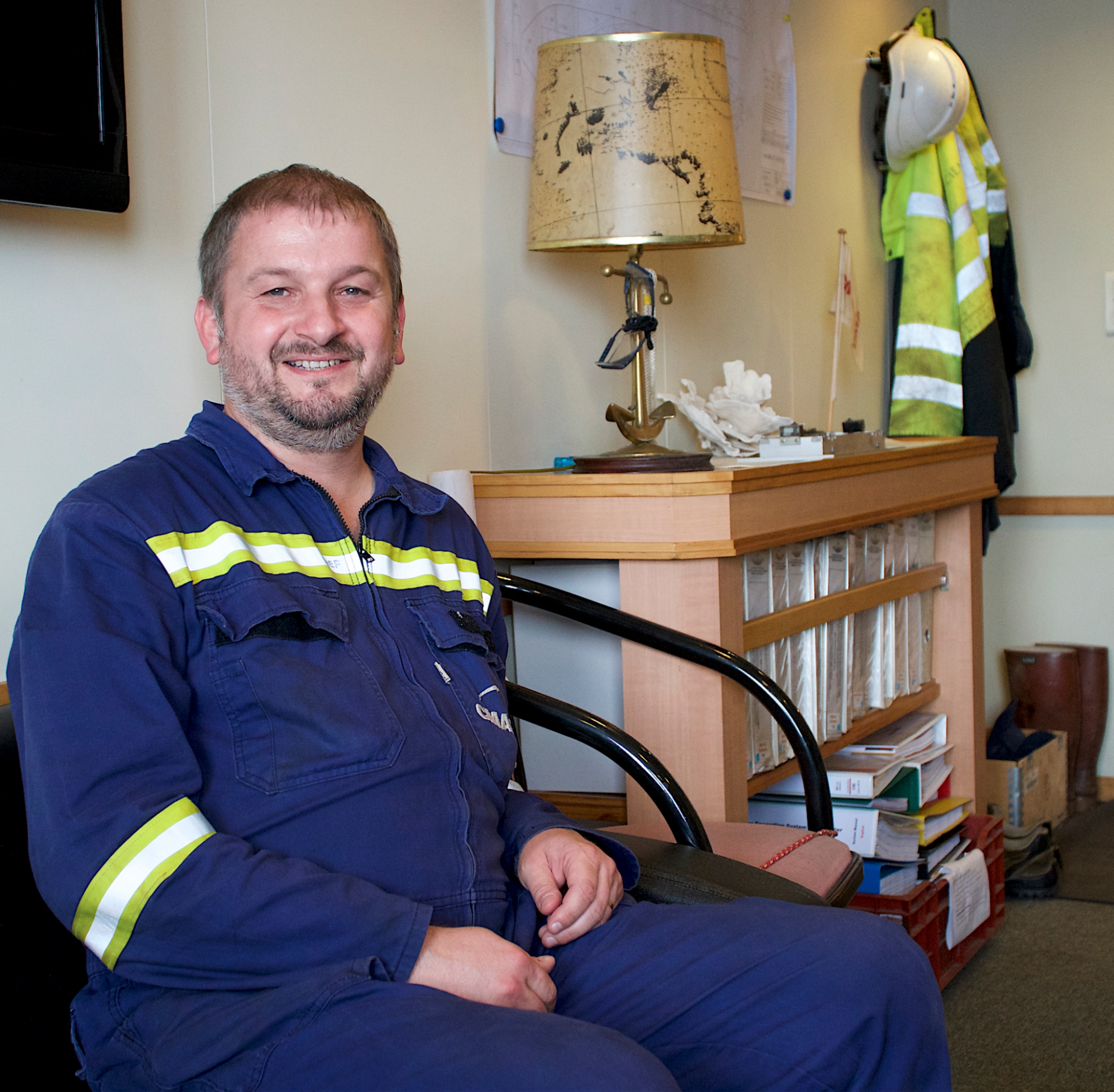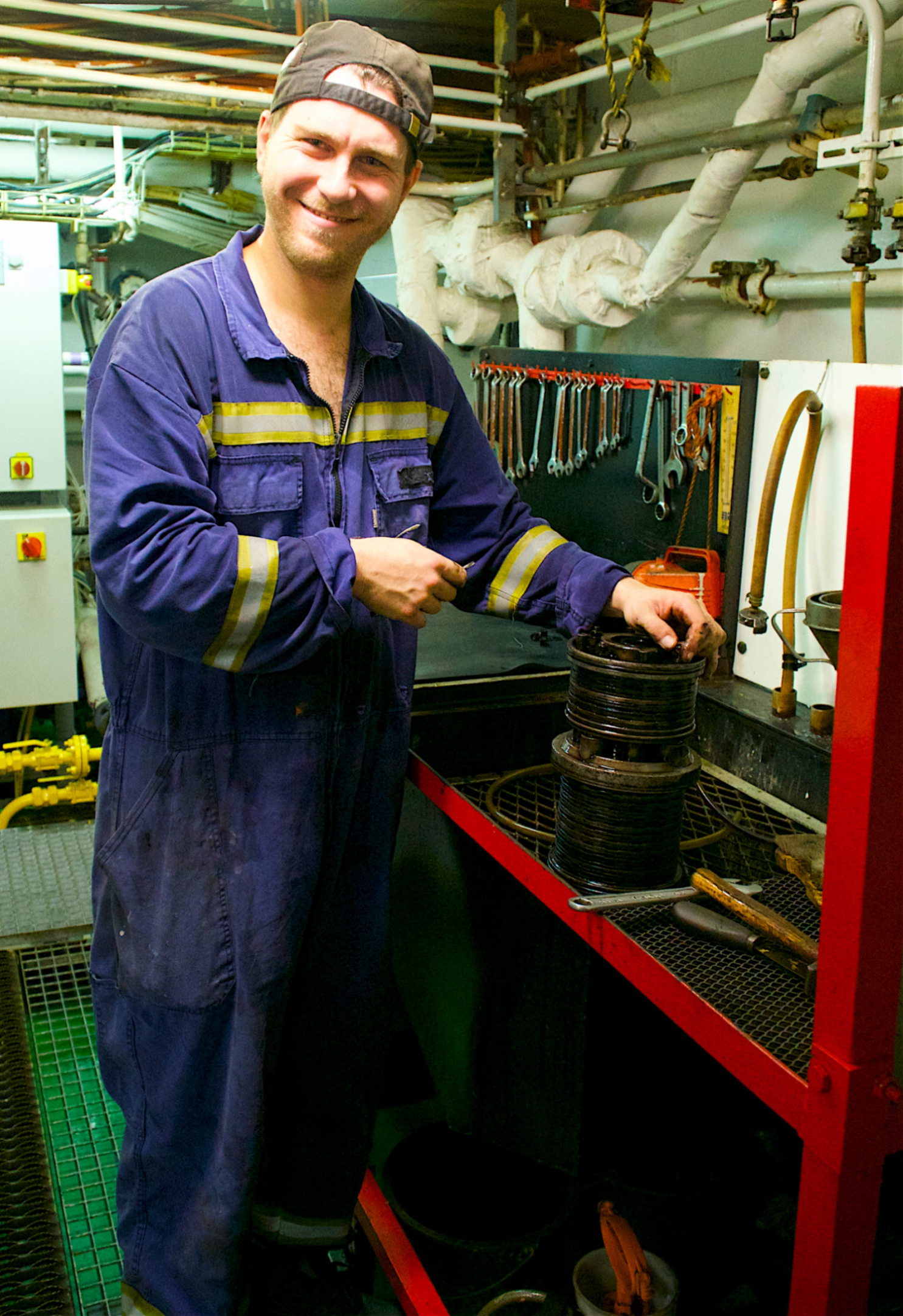The first thing you need to know about the R/V Marion Dufresne’s engine room is that it is not a room at all. In fact, the engine — or engines, to be more precise — occupy an entire section of the ship, encompassing numerous decks from starboard to port. These decks are noisy and hot places, packed floor to ceiling, wall to wall, with ton upon ton of heavy machinery.
For Mr Sebastien Martin, Chief Engineer of the Marion Dufresne, this inhospitable setting is where he goes to work every day. It’s his office, you might say. A resident of Lyon, where he lives with a wife and their three teenage kids, Mr Martin has been the ship’s Chief Engineer since 2013, but his service aboard the vessel dates to 1999.

Working with a crew of a dozen or so engineers, electricians, and the like, Mr Martin’s job is to make sure the ship’s pair of diesel engines generate the power required for everything from lights on the deck to the vessel’s two electric engines. Though brought to life by the diesels, the electric engines are the powerhouses that actually turn the ship’s two propellers, each of which measures 4 metres in diameter and weighs 3.5 tonnes (t). But the electric engines are more than up to the task — at maximum power, they can generate 7 megawatts of electricity, enough to power 1,000 homes.
The cost of all this electrical might is diesel fuel, which on ships is measured in tonnes (t). The Marion Dufresne can carry 1,500 t of the stuff, and the ship’s consumption varies drastically depending on how fast it’s moving. For example, while we were acquiring bathymetry in the Wharton Basin, chugging along at a leisurely 8 knots, the ship’s diesel engines were burning 9 t of fuel per day. In contrast, when were in transit between Colombo and Sabang, moving at a brisk 15 or 16 knots, the fuel consumption jumped to 32 t a day.

Mr Martin also oversees the ship’s fresh-water production. During the expedition, the ship will produce about 10 t of fresh, potable water, which is tested periodically for its purity. We started the voyage with about that much on board, and by the end of the trip we will have consumed about 12 t, which means water is not a problem on a vessel like this. In fact, if we had been moving at top speed, we would end the trip making more water than we started with, although the cost for that fresh water is pretty steep — 32 t of diesel fuel a day.